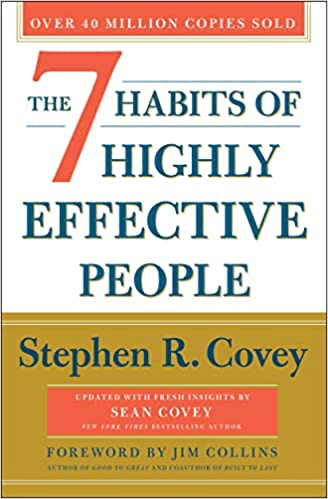Picture this. You’re busy. Very busy. Time is running away with you! You’re rushing around getting stuff done. But wait a moment – are you really getting things done? Or have you let ‘being busy’ divert you from your strategic priorities and goals? In reality are you spinning in circles rather than attending to essential strategic matters? It’s easily done. The trick is to learn to recognise when it’s happening, then re-focus your energies in the right direction.
It matters because effective people tend to be long-term thinkers, those who spend their time wisely and intelligently, thinking about the way ahead. In other words they’re very good at prioritising their activities and devoting time to important tasks rather than urgent ones. As you can imagine it can be a challenge when the sheer drama of the word ‘urgent’ drives many of us to react without thinking first.
The Time Management Matrix can help you think first and re-prioritise.

About the Covey Time Management Matrix
Stephen Covey popularized the Eisenhower’s Time Management Matrix in his book The 7 Habits of Highly Effective People. He suggests that you will be more successful when you don’t just manage time itself, rather you manage where to focus at any particular time.

The Covey Time Management Matrix is a clever framework designed to help us prioritise our time and tasks in a way that delivers the best efficiency and productivity, ultimately optimising your impact.
The model uses a four-quadrant system to help you categorize every task, responsibility and goal in a positive way that makes logical sense, pointing you in the right direction to achieve the strategic goals you’ve set.
It does this by cleverly nudging you to take a step back and take stock of what you’re doing, examining your activities and driving you to sift through urgent activities. And by doing so it helps you to identify the most important goals as your key priorities.
Follow the matrix and you can see much more clearly how you could maybe do less of some things and more of others. The idea is to do less of the activities that fall into Quadrant 4 and dedicate more time to focus on the key priorities and longer-term goals in Quadrant 2. It does so by slicing fairly mercilessly through what’s ‘urgent’ to reveal what is genuinely important, what really matters in the long run.
Pinning down urgent versus important means 100% honesty
The matrix breaks tasks and responsibilities into urgent, those needing immediate attention or action, and those that are important, in other words highly significant or valuable to your more strategic goals. The idea is to fill in all four quadrants with absolute honesty, revealing a fascinating picture that maybe looks rather different to the way you usually do things.
- Quadrant 1 – These are your most urgent and important goals, the ones that command immediate attention, perhaps because there’s a pressing deadline
- Quadrant 2 – These tasks are not urgent but they are important. They are of high strategic importance, and they’re the ones that often get squeezed out because you’re too busy being distracted by the other Quadrants
- Quadrant 3 – These are not important, but because they seem important as they demand your attention. Think things like interruptions, unexpected calls, and random questions that people demand answers to urgently
- Quadrant 4 – These tasks are neither urgent nor important. They simply kill time, using it up. Checking social media falls into this category, as does spending energy looking into new ideas rather than actually delivering outcomes
Here is Covey’s example of the kind of activities that the 4 different quadrants contain.
| IMPORTANT | Quadrant 1 – ACTIVITIES Crises Pressing problems Deadline-driven projects |
Quadrant 2 – ACTIVITIES: Prevention PC activities Relationship building Recognising new opportunities Planning, recreation |
| NON-IMPORTANT | Quadrant 3 – ACTIVITIES: Interruptions, some calls Some mail, some reports Some meetings Proximate, pressing matters Popular activities |
Quadrant 4 – ACTIVITIES: Trivia, busy work Some mail Some phone calls Time wasters Pleasant activities |
What are Quadrant 2 activities?
A quadrant 2 activity is important to your working life, but not urgent. When you give less priority to the others, especially to Quadrant 4, success is so much easier to achieve, built solidly by maximising Quadrant 2 activities.
You might feel, at a glance, that Quadrant 1 activities should be your primary focus. But having too many urgent activities isn’t helpful. It simply means you’re caught up in constantly reacting to things. Real creativity – and real creation – most often happens in Quadrant 2, where you quietly, methodically focus on the things that mean the most to your professional development and strategic goals.
So what do Quadrant 2 activities look like?
At the top of the list sits learning how to live a good working life and gaining wisdom on the journey. High priorities involve tasks that prevent or resolve immediate problems or anticipate problems and design ways to prevent them. Operating in Quadrant 2 means creating better ways of working. Developing skills, increasing productivity, boosting your capability and that of others, developing new habits, and actively prioritising the allocation of time.
Basically you prioritise the activities that produce the highest value or the best results. You prepare well. You carry out thoughtful, creative work. You build the best value relationships. And you foster the most productive collaborations.
How do you feel when you get it right?
It’s hard to focus on Quadrant 2 tasks when you’re anxious, stressed, pressured, and constantly asked to fight fires. That’s how Quadrants 1 and 4 tend to pan out. The more time you spend on Quadrant 2 activities, the more effective you will be. Making more room for time and thought in Quadrant 2 will enhance your working life. Focusing on the genuinely important priorities on a more regular basis will not only make you feel better and you will more than likely improve how others feel too.
Spending more strategic time in Quadrant 2.
If you would like prioritise with greater skill and refocus your energies more strategically, then our coaching can help you. Contact us here to talk
About us
We are a team of highly experienced executive coaches, focused on developing leaders working in high-stakes environments across diverse sectors. We create space for leaders to step back, think clearly, and navigate complexity with confidence and renewed purpose. Our narrative-based approach blends deep listening, incisive questioning and rigorous thinking with a strong commercial focus.
“Our Knowledge Centre is designed to resource leadership practice and development. The articles we share on this site are intended to spark fresh thinking, offer practical tools, and support continuous professional growth.”
Jude Elliman
Founder
Our approach
We work with leaders to build their leadership brand and impact. Our approach includes:
✔ Challenge and support: creating time and space for rigorous thinking and problem-solving
✔ Narrative coaching: defining and refining the stories that shape leaders and organisations
✔ Commercial focus: cutting through complexity for strategies that inspire change and drive results
We help leaders make crucial decisions, align teams for greater effectiveness, and envision new possibilities for the future.
